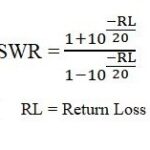In 5G NR (New Radio), PDCP Stands for Packet Data Convergence Protocol. PDCP is a Protocol Layer Responsible for Various Functions related to the Transmission and Reception of User Data Packets Over the Radio Interface. Its Primary Role is to Provide Services Like Header Compression, Integrity Protection, and Ciphering to Ensure Efficient and Secure Communication Between the User Equipment (UE) and the Network.
One Key Function of PDCP is heade convent, which helps in reducing the size of packet headers to optimize bandwidth use. This is crucial for enhancing the overall efficiency of the communication process. Additionally, pdcp provids integrity protection to ensure that the data packets are not altered or corrupted during transmission. This is achieved through the use of integrity algorithms.
Moreover, PDCP Plays a Vital Role in Ciphering, Ensting the Confidentiality of the Transmitted Data by Encrypting it. Encryption Helps Prevent unauthorized Access to Sensitive Information and Adds A Layer of Security to the Communication Between the Ue and the Network.
PDCP ALSO Supports Various Transmission Modes, included transparent mode and non-transparent mode, Providing Flexibility in Adapting to Different Communication Scenarios. Overall, pdcp is an essential protocol layer in 5g nr, contributing to the efficient and secure exchange of data between devices and the network.
